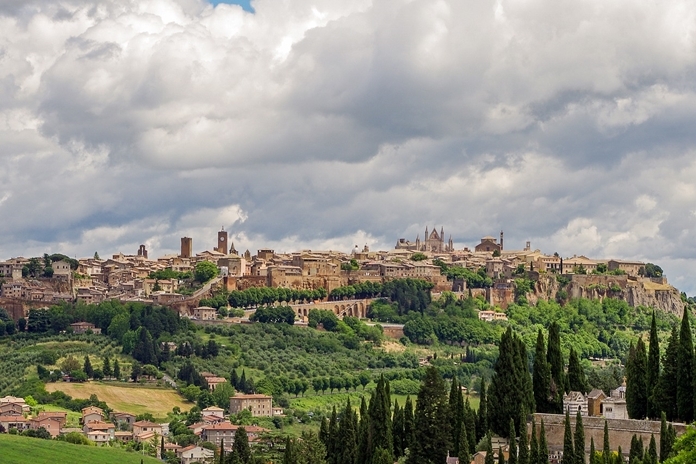
I remember once seeing a newspaper cartoon, in which an old nun whispers to a crone-like Mother Superior, “I think you should know that we’ve found a case of syphilis in the Convent.”
“Thank God!” comes the reply, “I’m fed up with the Chardonnay.”
Now I’ve got nothing against Chardonnay mind you, but these days it’s often used to make rather dull commercial wines for mass consumption. This perhaps is why so many people are beginning to get fed up with it. An acquaintance once said to me at a restaurant, “Anything but Chardonnay” which rather gave the game away that she had never tasted the splendid whites that the French region of Burgundy has to offer. You see, white wine in Burgundy can only be made from Chardonnay, although in some areas a lesser grape known as the Aligoté is also permitted. Many wine enthusiasts would argue that Burgundy produces some of the finest (and most expensive) white wine in the world. I would heartily agree with them and if I had the option, Burgundy would nearly always be my first choice for white wine, because within that single area there’s so much variety. Sadly I can rarely afford to buy it in Thailand.
For an alternative to Chardonnay you might like to consider either the white wines of the Alsace region of France or the white wines of Germany or Austria. I’ve seen quite a few Alsatian wines around here and not too expensive either. They’re mostly all dry and the most interesting are wines made from Pinot Gris (yes, it’s the same grape as Pinot Grigio), Riesling (REEZ-ling) and Gewürztraminer (Geh-voortz-TRAH-min-ah). The Alsatian Riesling is completely different to its German cousins and Gewürztraminer is usually off-day with wonderful aromas or herbs and lychees. It makes a splendid partner to many spicy Thai dishes.
Another possibility would be the light crisp whites of Italy. Let’s take Orvieto for example. You might be surprised to know that Orvieto (ohr-VYAY-toh) is a place, not a wine style or grape variety. It’s a medieval city, perched on a hill in the province of Umbria. Wine has been made in this region for centuries and Orvieto, originally a sweet wine, has been described as “liquid gold”, because it was so frequently served at the tables of the rich and famous. So valuable were the vineyards, that in 1600, a law was passed to inflict heavy penalties upon anyone who damaged the vines. Today though, Orvieto is not sweet but is dry and clean-tasting, usually blended from three or four local grape varieties.
Coli Orvieto Classico DOC
The respected firm of Coli has been making wine since 1926 and today produces about 12 million bottles annually. This one is a delicate yellow colour with the faintest greenish tinge and although dry, it has a sweet aroma of tropical fruits and rich pineapple. There’s a firm authoritative body, an alcohol content of 11.5% and a pleasing touch of acidity, giving it a sharp clean flavour. Incidentally, if the mention of “acidity” conjures up vague images in your mind of steaming test-tubes in the school chemistry lab fear not, for acids occur in almost everything we eat or drink. Milk and jam are quite high in acids; beef, pork, tea and coffee are even higher. There’s even acid in cornflakes. Acidity is what “turbo-charges” a food and kicks up the flavour.
This Orvieto has a lingering spicy aftertaste and would be an ideal partner for white meats, most kinds of fish and even some egg dishes. The letters DOC stand for Denominazione di Origine Controllata but I’ll resist the temptation to describe what that’s all about. Suffice it to say that “DOC” is a guarantee that the wine is made to specific standards and what you see on the label is what you get in the bottle. The addition of the word “Classico” means that the grapes were grown in the oldest production areas of Orvieto and considered superior quality to a wine simply labeled “Orvieto”.
Lungarotti Pinot Grigio
Lungarotti is one of Umbria’s top wine producers, founded in the 1960’s and based in the town of Torgiano. If you decide to try this wine, open the bottle and stick it in the fridge for an hour. You’ll be rewarded by a sweetish, delicate floral and pineapple aroma. Let me just add that to appreciate the aroma, you actually have to get your nose right into the glass (but not into the wine) and take a few quick sniffs, like a dog. Then take some more. If you don’t bother to smell the wine, you’re missing a huge part of the enjoyment.
The wine is a lovely straw-yellow colour; there’s a zesty, dry taste with sweet overtones and a faint tang of citrus fruits. They’ve gone easy on the acid too, just enough to hold the body together. It’s a pleasingly balanced wine with 13% alcohol, so if you prefer soft whites which are not tart and acidic, you’ll probably love this one. There’s a long, refreshing, almost spicy finish that lingers in the mouth nearly a full minute after swallowing the wine. That’s invariably an indication of a well-crafted wine. Oh, I nearly forgot to tell you: Lungarotti also make a jolly good Chardonnay.
The wines described in this column are generally available in Thailand, either from local outlets or from online wine suppliers.
 |
 |
 |





